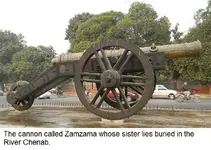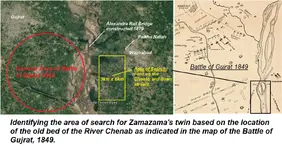Zamzama
Jr. Member
- Joined
- Apr 21, 2020
- Messages
- 23
- Reaction score
- 9
- Golden Thread
- 0
- Primary Interest:
- All Treasure Hunting
The sister of a cannon named the Zamzama which was cast 260 years ago sank while being ferried across a major river in Pakistan. i need help / advice on how to locate it and what would be the best detector to use. The Zamzama is on display in Lahore and its barrel is made of copper and bronze, weighs 4.5 tons and is 14 feet long. The river as changed its course since the sister of the Zamzama sank and the area identified for the search is now heavily cultivated and the soil is loam (clay, silt & sand). The floodplain of the river is prone to flooding and depositing layers of silt/loam and the barrel may be 10-15 feet below the surface. i have marked out an area of 6 km by 3 km and i presume a grid would have to be surveyed and marked before commencing the search. I have no experience of searching for buried objects and would certainly need expert help / advice. [SUB]

 [/SUB]
[/SUB]

 [/SUB]
[/SUB]
Upvote
0



